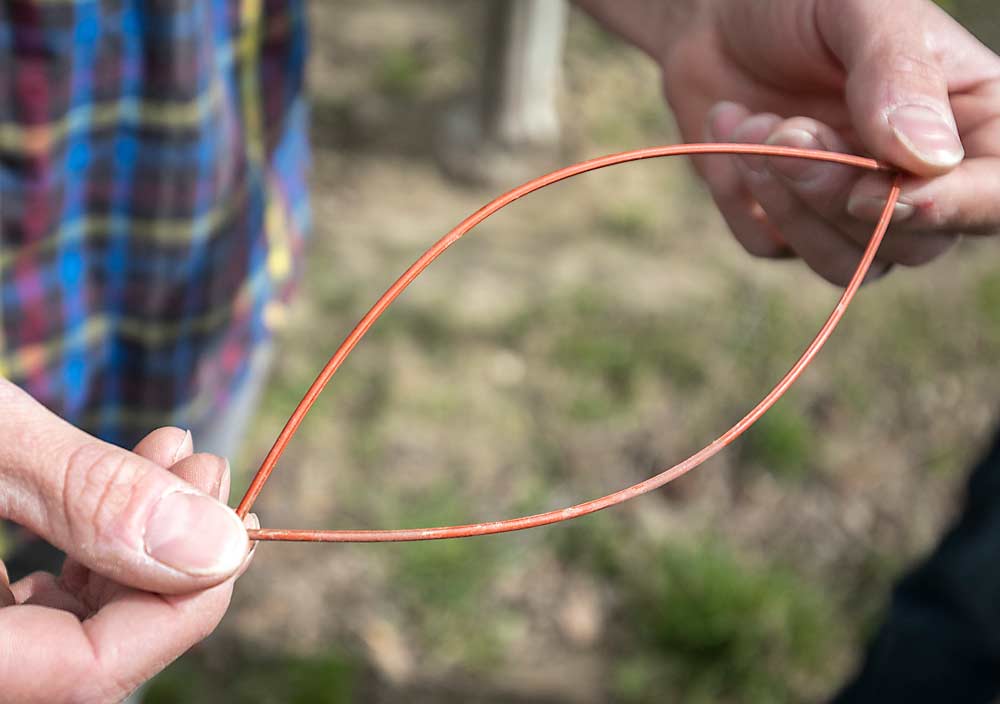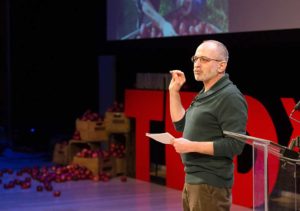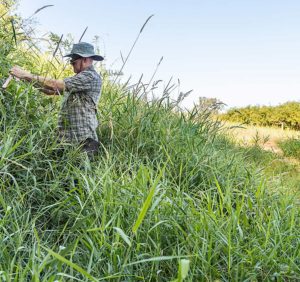
At this point, integrated pest management practices are pretty well known in orchards but might feel like a new idea to produce buyers interested in sourcing sustainably grown fruit.
“Pretty much all growers use some level of IPM in their operations,” said Michigan State University assistant professor Julianna Wilson, “but more are starting to hear from produce buyers, ‘Hey, have you heard of this thing called IPM?’”
Wilson said it’s time to reintroduce integrated pest management as a concept and help growers talk about it with buyers and the general public. She spoke during an educational session at the Great Lakes Fruit, Vegetable and Farm Market EXPO in Grand Rapids, Michigan, in December.
Wilson said IPM combines knowledge of crop biology, pest biology and environmental conditions for a season-long approach to managing pests.
“IPM is not really about killing every last insect,” she said. “It’s about how you prevent them from doing damage.”
Most growers already think about their crop in terms of its growth stages throughout the season and use that progression to make key decisions.
“Paying attention to real-life cues going on in orchards is something everyone does now, but some don’t recognize it as IPM,” Wilson said.
She detailed a useful term she picked up in research circles, which might help get across the message about what growers are already doing: “The Three Ms of IPM.”
—Minimize. Strive for conditions that favor pest suppression (this includes cultivar selection and good horticultural practices).
—Monitor. Correctly identify would-be pests (this includes scouting and trapping).
—Manage. Use tactics that are targeted and effective against the pest.
Biorational tactics
Wilson also discussed biorational tactics for protecting tree fruit from insect pests. Biorational tactics use knowledge of the biology of a target pest to interfere with its ability to cause crop damage. Examples of biorational tactics include: pheromone disruption and trapping; entomopathogens, such as bacteria or fungi species that kill pest insects; life-stage and species-specific pesticides; model-guided decisions; natural enemy conservation; and biopesticides, Wilson said.
Wilson highlighted the Bacillus thuringiensis (Bt) bacterium as a microbial biopesticide. Bt can be used during bloom, but applications require daily highs of 70 degrees Fahrenheit.
“If you don’t have that, you should not be applying this because it’s just not going to work,” she said.
Two to three Bt applications may be necessary. Proper timing is critical. Do not apply Bt if first-instar caterpillars haven’t emerged.
Wilson also mentioned a growing degree-day model, developed by MSU researchers, to combat spotted wing drosophila in tart cherries. The model pinpoints when SWD females lay eggs in the Montmorency variety, so growers don’t have to spray beforehand.
“That’s the kind of biological information we need in order to be able to better utilize the tools we have,” Wilson said.
Beneficial insects are another tool. Last year, MSU researchers released one of SWD’s natural enemies, the wasp Ganaspis brasiliensis, in Michigan cherry orchards, she said.
Most Michigan farms are adjacent to woodlots or other noncrop habitat, which can provide habitat for pests but also for beneficial insects, Wilson said. (See “Edge effects may boost biocontrol.” )
Pheromones are used to manipulate pest behavior through monitoring, mating disruption and mass trapping. Pheromone disruption can be especially effective against codling moth.
Entomopathogens include viruses, microsporidia and nematodes. For example, a microsporidium living in Japanese beetle helps naturally suppress the beetle’s population and can be spread via infected beetles.
There are life-stage-specific pesticides that interfere with chitin formation and disrupt the ability of a pest to change from larval instar to adult. And there are species-specific pesticides that use RNA interference technology to disrupt pests. These are fairly new products, however, and need more research, Wilson said.
—by Matt Milkovich








Leave A Comment